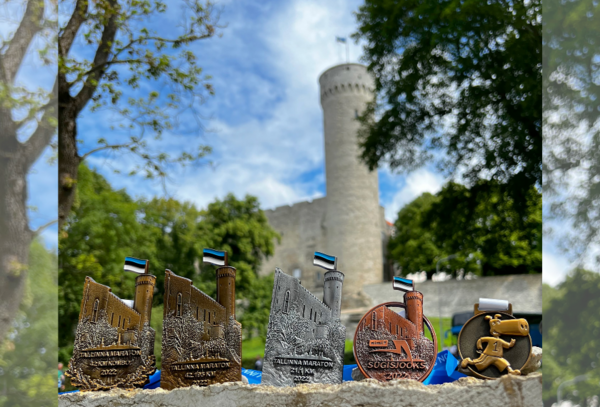Tallinn Marathon 2022 medals are inspired by one of the national symbols of Estonia
The unique medals for participation in the biggest running event in Estonia are this year inspired by one of the most important symbols of Estonian statehood, the Tall Hermann Tower, at the foot of which is also the start and finish of the Tallinn Marathon for the first time. The medals are also unique because they can be placed upright.
“The medals of the Tallinn Marathon are medals that stand up. Literally. Our most important flag tower can be put from the neck right on the shelf – not lying down, but standing up,” says the author Priit Verlin as he describes the medals.
The unique medals for participation in the biggest running event in Estonia are this year inspired by one of the most important symbols of Estonian statehood, the Tall Hermann Tower, at the foot of which is also the start and finish of the Tallinn Marathon for the first time. The medals are also unique because they can be placed upright.

Tall Hermann
Tall Hermann is one of the foremost symbols of our national independence. The national flag is hoisted to the top of the tower every day at sunrise, accompanied by a musical signature. Throughout our complicated history, many foreign flags have also flown from the top of the tower.
The national flag was first hoisted to the top of Tall Hermann on 12 December 1918 and remained there until the summer of 1940.
After the decades of the Soviet occupation, the national flag was again raised on 24 February 1989. The flag is changed about six times a year and the used flags are numbered and archived. The flags are made in the flag factory from a special weather proof fabric.

Tall Hermann, which means ‘tall warrior’ or ‘great chief’ in German, was one third shorter than originally. The records say that the tower was built in three stages from the mid-14th century until the beginning of the 16th century.
Tall Hermann, rising 83 metres above the sea level, was the highest stone tower around the Baltic Sea in the Late Middle Ages. Initially it functioned as a lookout and defence tower with sweeping views which ensured that no enemy could approach unnoticed.
To make life more comfortable for the guards, the tower could be heated thanks to the hypocaust-type furnace in the lower chamber. When the furnace heated up, the chimney shaft was closed off and warm air rushed upwards from the lower storeys via channels.
Tall Hermann was one of the first buildings to use this type of heating system. Later, this was also used in Tallinn town houses.





















